Stima Universal 4
A very peculiar Swiss machine, that is the product of two patents by Albert Steinmann from Switzerland. The first patent (CH256580) mainly discusses the carriage movement mechanism, which contains a toothed bar and is spring-loaded with a string around a drum. That idea does not seem very new (see e.g. the early Rheinmetall machines) but he still managed to get it patented. The fact that the frame for the carriage tilts up to disengage the toothed bar may have something to do with that. The system does allow for clearing both registers in the carriage without lifting it (with a strange kind of twisting-butterfly actuator), but only if the crank is fully in its resting position.The second and oldest patent (CH252161) is about a keyboard that can be set to retain numbers (R button pressed) or clear them automatically (alternative setting). Again, this appears to be a rather roundabout way to patent an old idea.
What these patents do not discuss is the ideas that set this machine apart from every other calculating machine I know - namely the fact that the carriage is in the front, much like in (keyboard-operated) pinwheel or geared sector calculators, but to my knowledge unseen in Thomas-type machines. And this is indeed a stepped drum calculator, but one with a twist. Whereas the simple way to build a stepped drum calculator would be to connect the keyboard to a bar with indents that shifts various amounts according to the key that is being pressed, and is directly connected to a gear that "reads" the stepped drums, which is then directly connected to the bevel gears for addition and subtraction into the register, in this case things are a bit different.
The movement of the key bar, seen in the picture below...
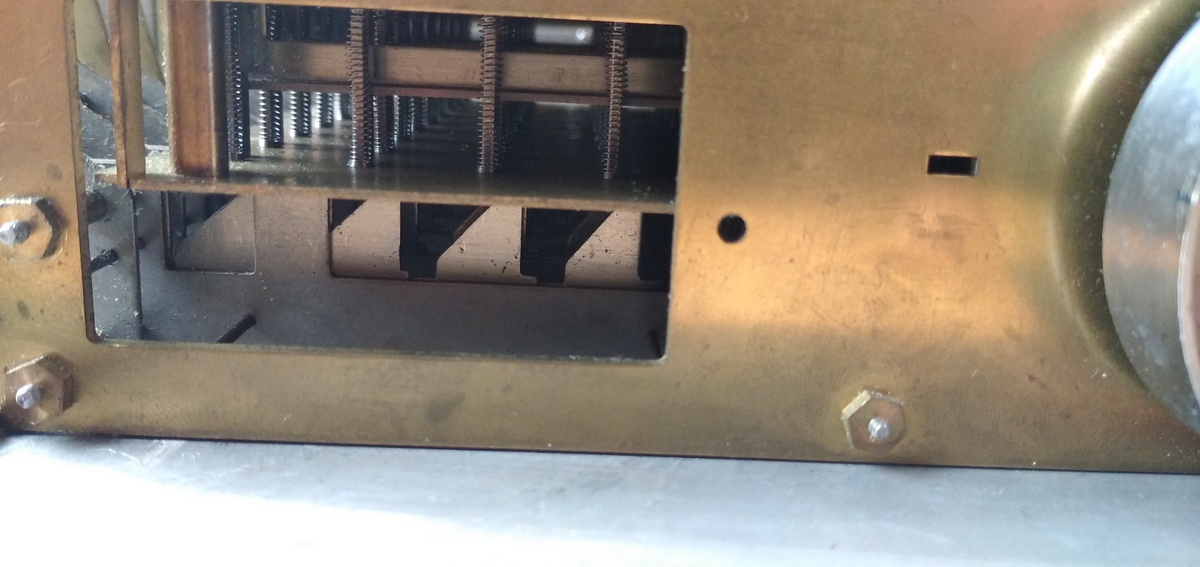
... is reoriented with a lever through 90°, to shift the follower gear up and down that engages with the stepped drums.
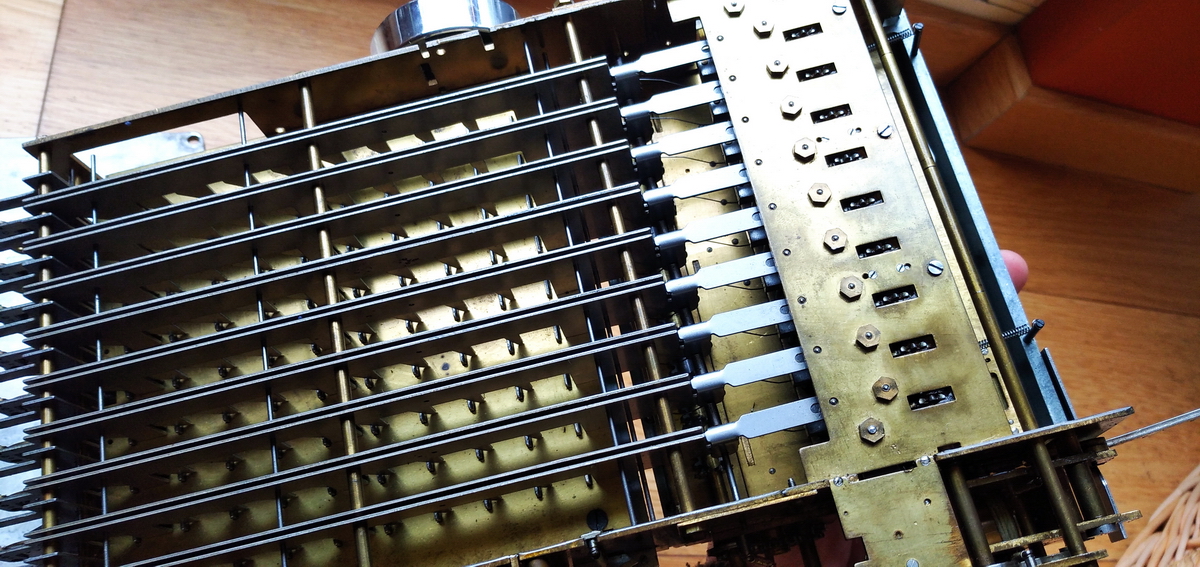
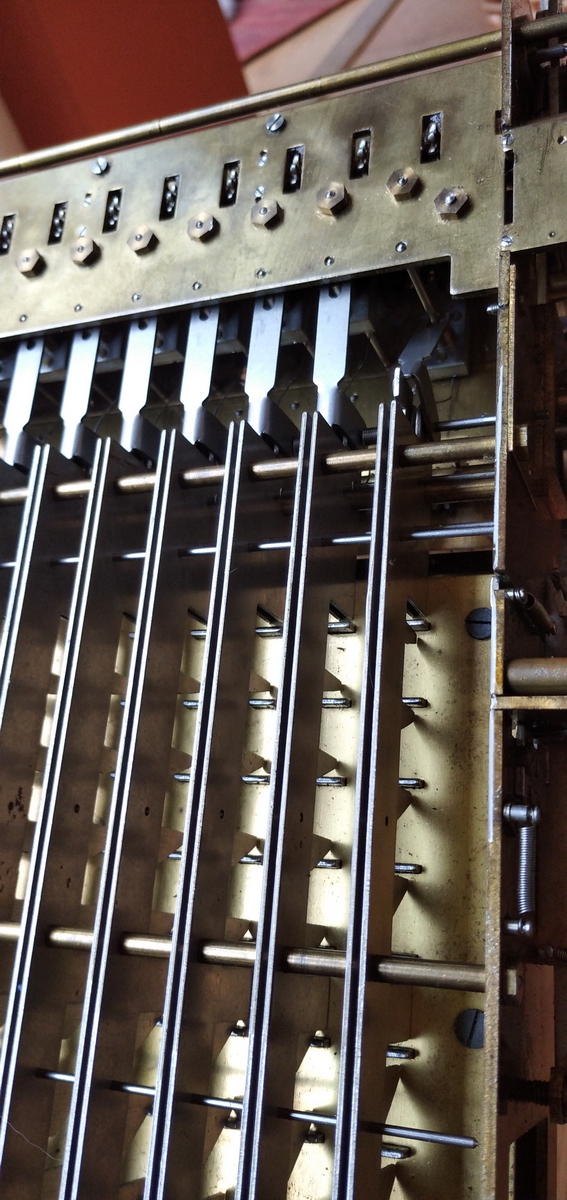
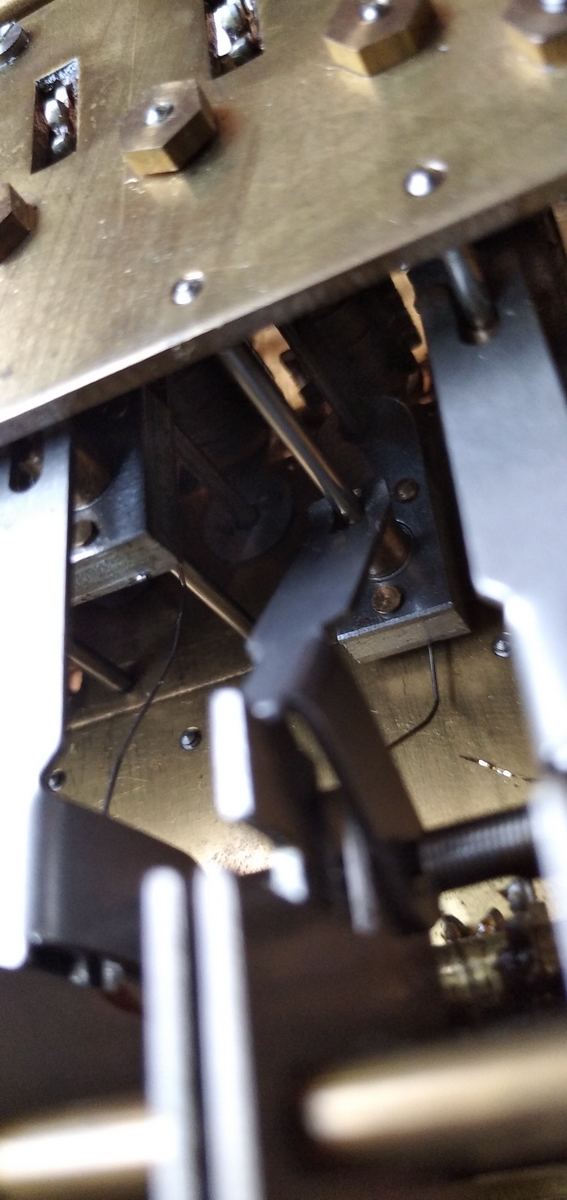
The stepped drums in this machine are vertical. The movement of the vertical axle with the follower gear for the stepped drums is then transferred via another set of bevel gears to the bevel gears that engage with the carriage. This appears to be a rather roundabout way to get the numbers up into the carriage ...
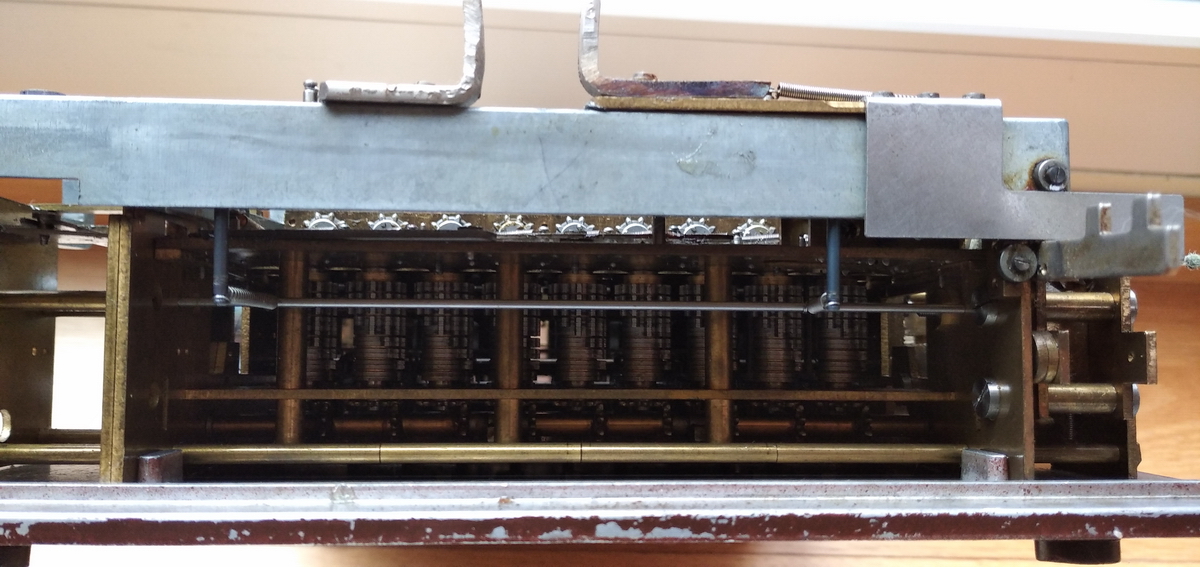
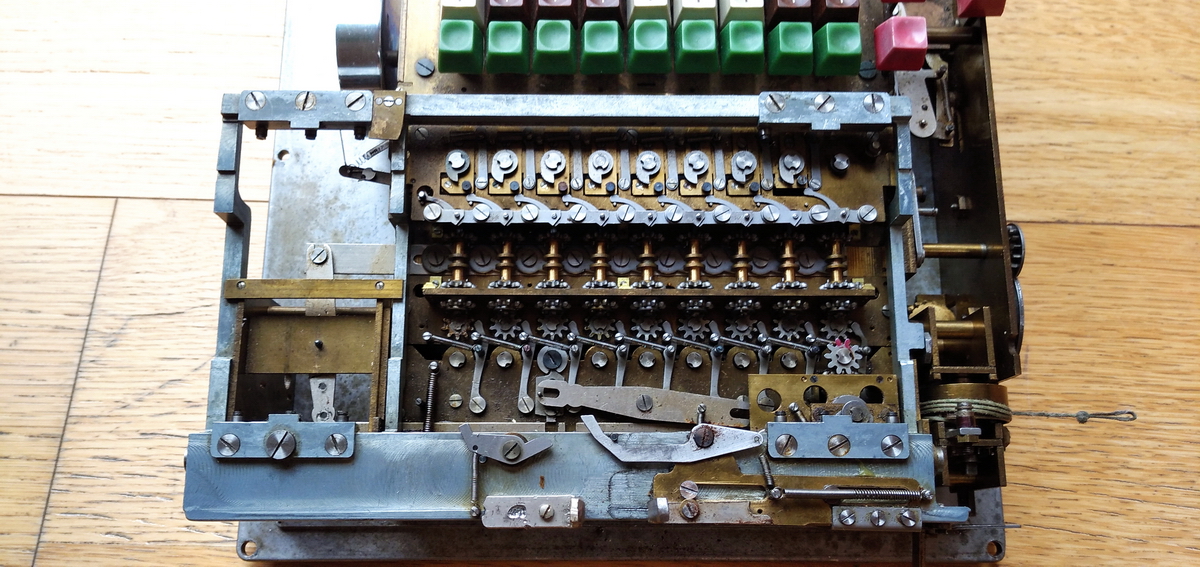
The tens carry is also effected in a quite peculiar way. The tens cary tooth on the numeral gears in the carriage pushes a lever which shifts a brass block that in turn brings a one-toothed gear into engagement with the bevel gear axles. The timing of the machine is such that during the first half turn of the crank, the calculation is finished, and the next half turn is entirely used for the tens carries, as well as for resetting them (with the odd-shaped curve wheels in the top row right below the carriage rail). Whereas in most Thomas machines, this extra tooth is situated at the end of the stepped drum, here it is on the axle with the bevel gear, and out of the way of the stepped drums, which allows for a lot more space for the tens' carry mechanism.
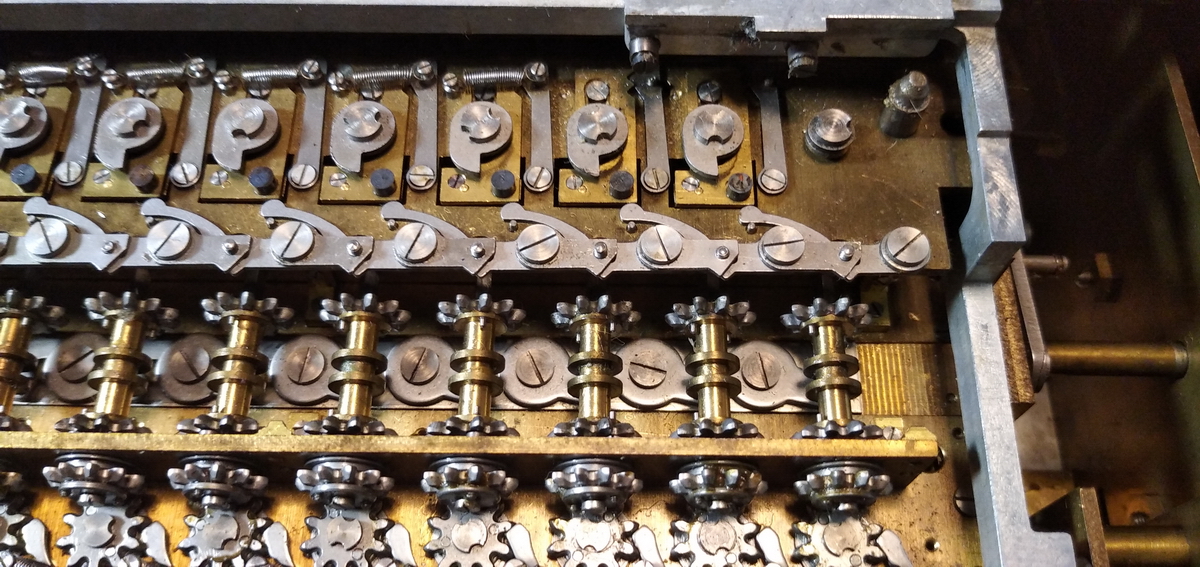
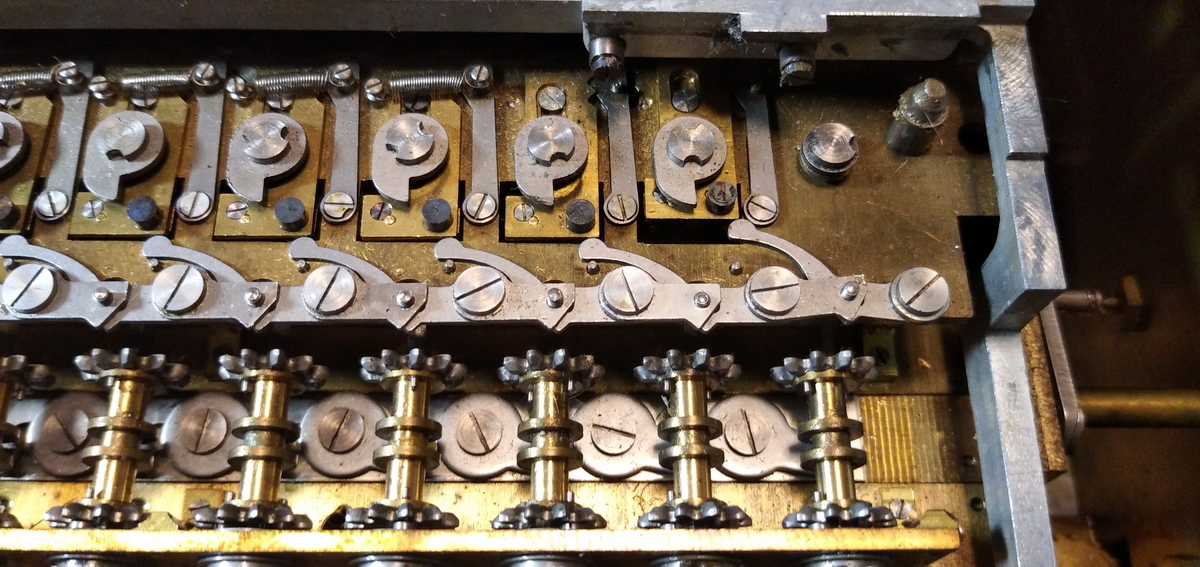
Finally, the control register for the keyboard is operated by the same keybars, over a geared sector that pivots and thus rotates the numeral wheels.
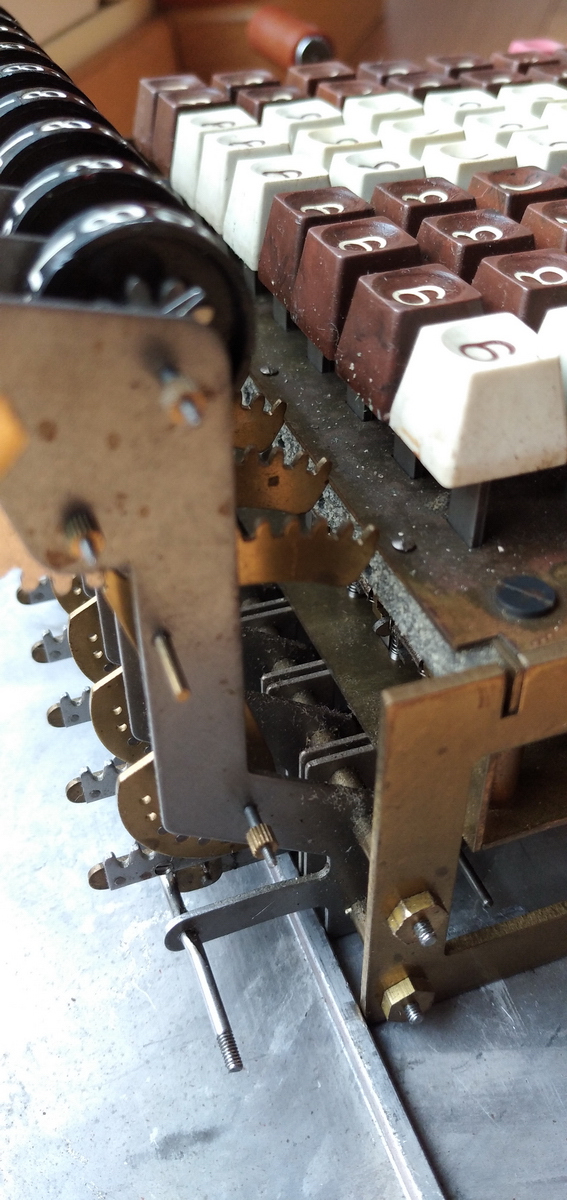
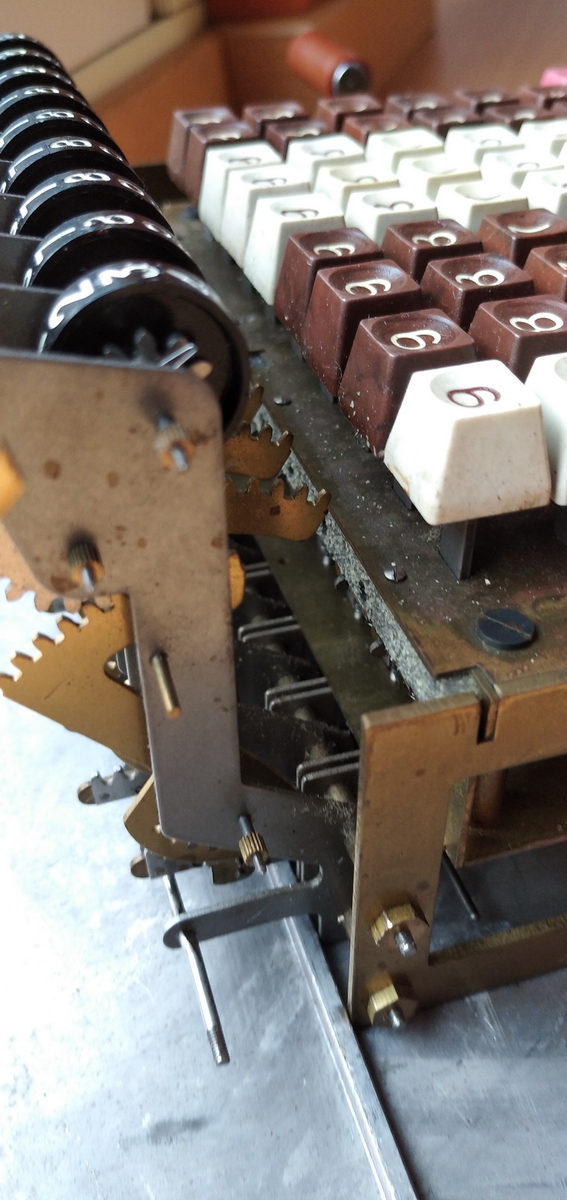
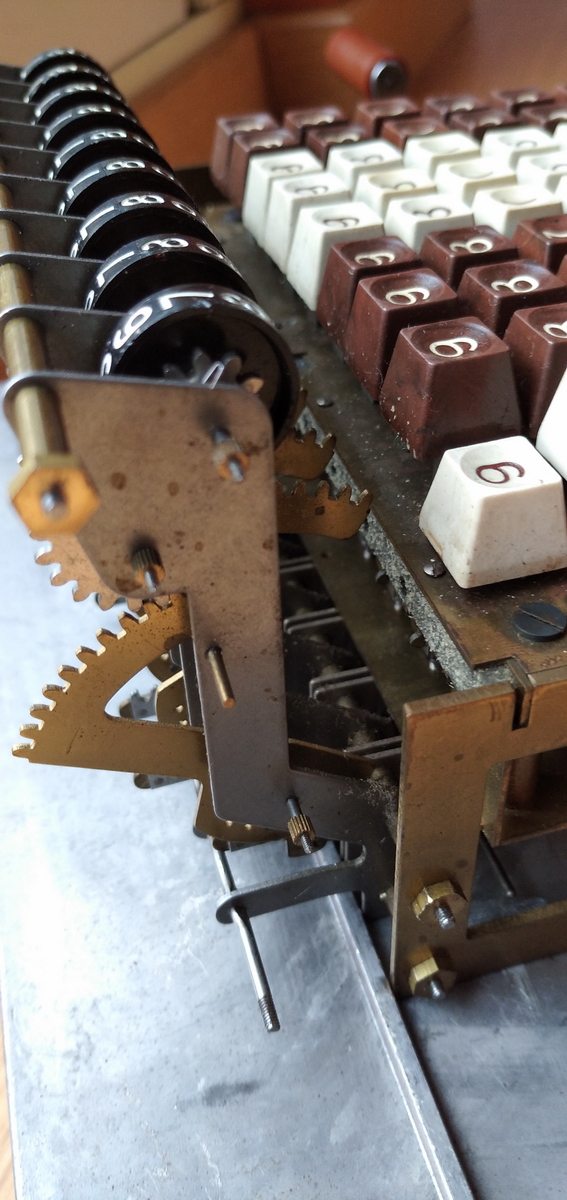
Now ... was all of this a good idea? Stima had been producing cheap rack adders since the 1930s, and this was their first attempt at a "serious" four species calculator. It was meant to be cheap. My example has probably been abused a bit during its life, and may not be operating as smoothly as it once did ... but still. There is a lot of resistance in the keyboard, and both setting and resetting it is difficult - especially the leftmost digit. Rotation of the machine does not feel smooth due to the ratchet safety that operates on the main crank that is noisy and gritty. The patented carriage movement is troublesome and hard to adjust. What they were thinking when they arranged the drum for the spring that returns the carriage to the right in such a way that the ratchet disengages when the tension is relieved, and it cannot be reached without disassembly of the entire case, which also means taking the carriage and all levers off, we'll probably never find out. The bakelite case in addition is prone to cracking at the attachment screw points. The plastic for the other keys, whether it's coloured brown, pinkish red or green, looks gaudy. None of these traits really breathe "Swiss quality".
Nice features are that the numbers are nicely visible right in front of the operator, but that is really its only redeeming feature. It feels clunky and stiff, is ugly, way overcomplicated, and hence too expensive - but it still feels like a cheap toy. That immediately explains why so few are around today. Can you tell I don't really like this concept?
Still, I made some pictures ...
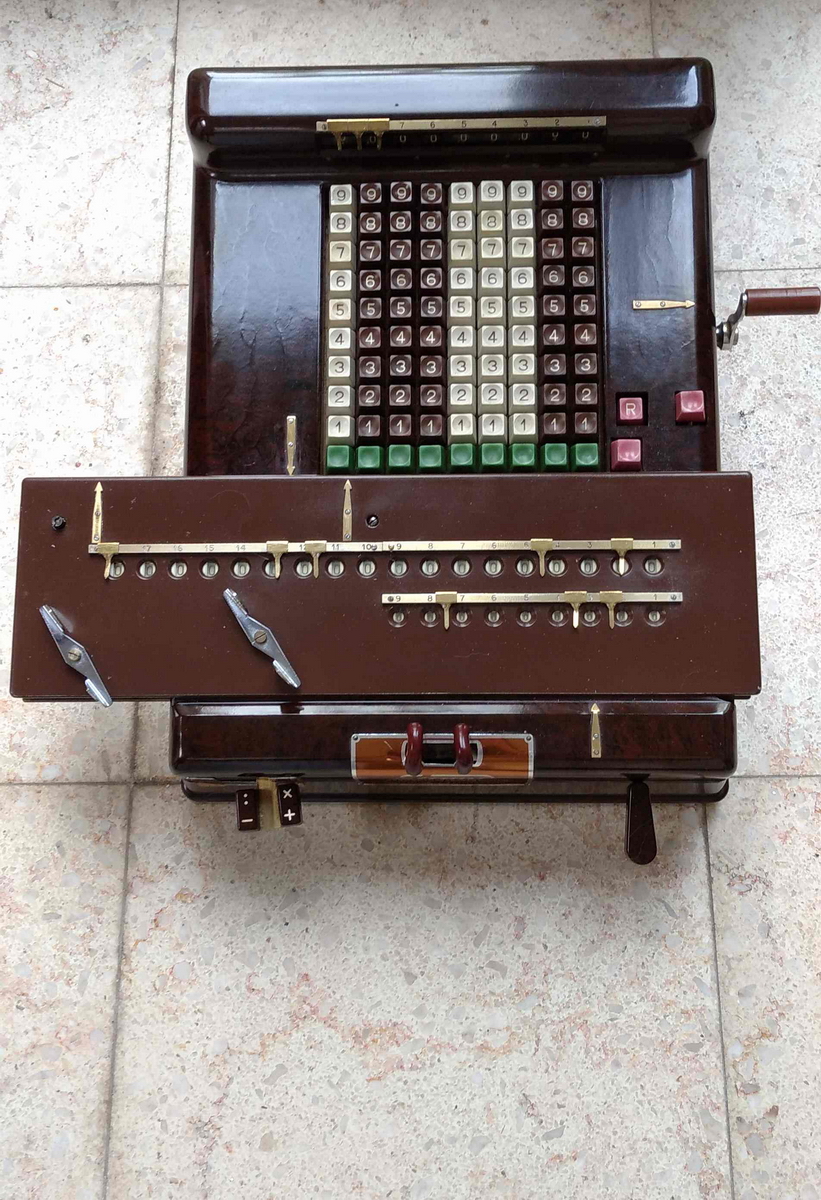
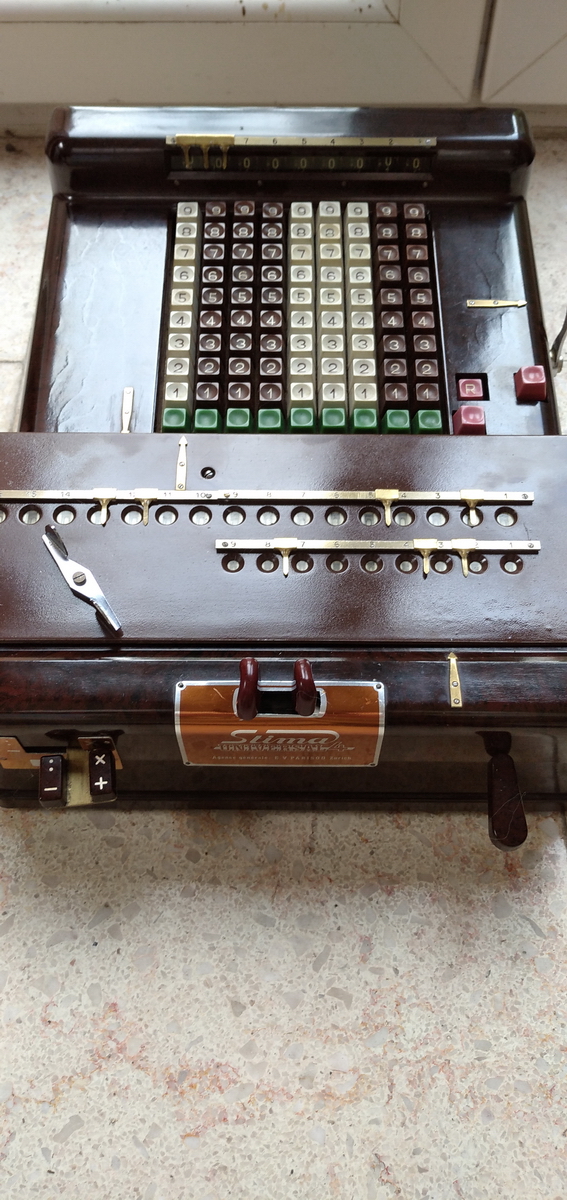
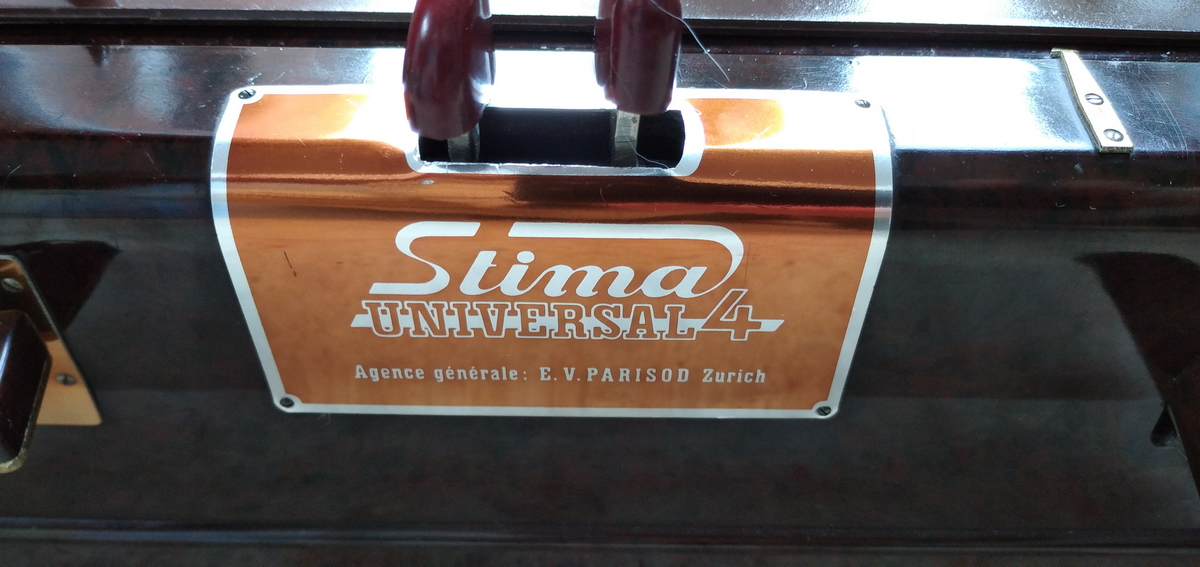
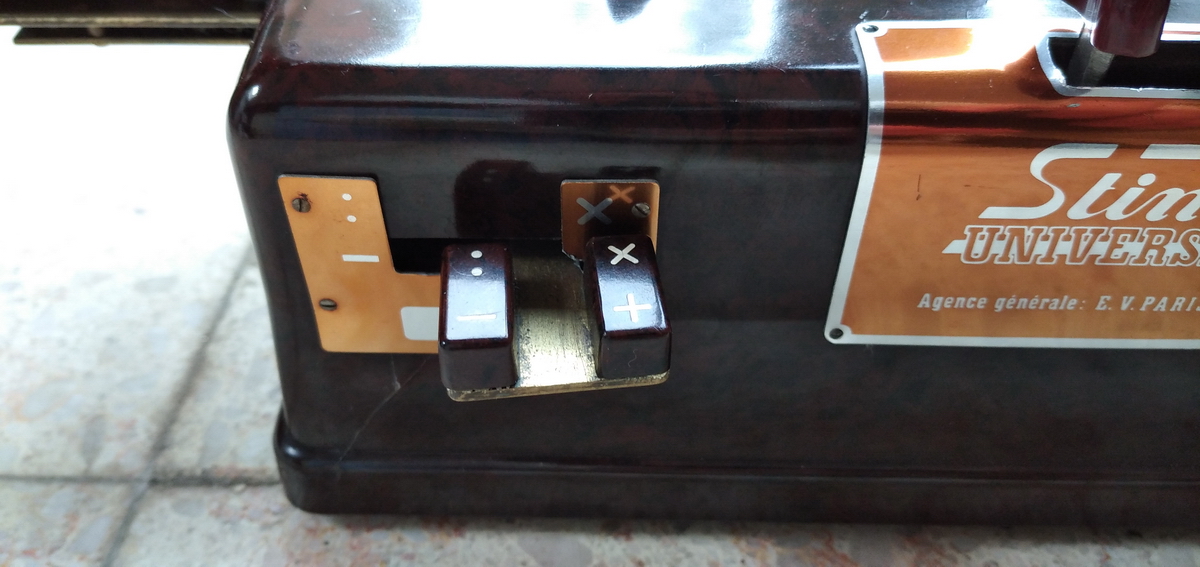
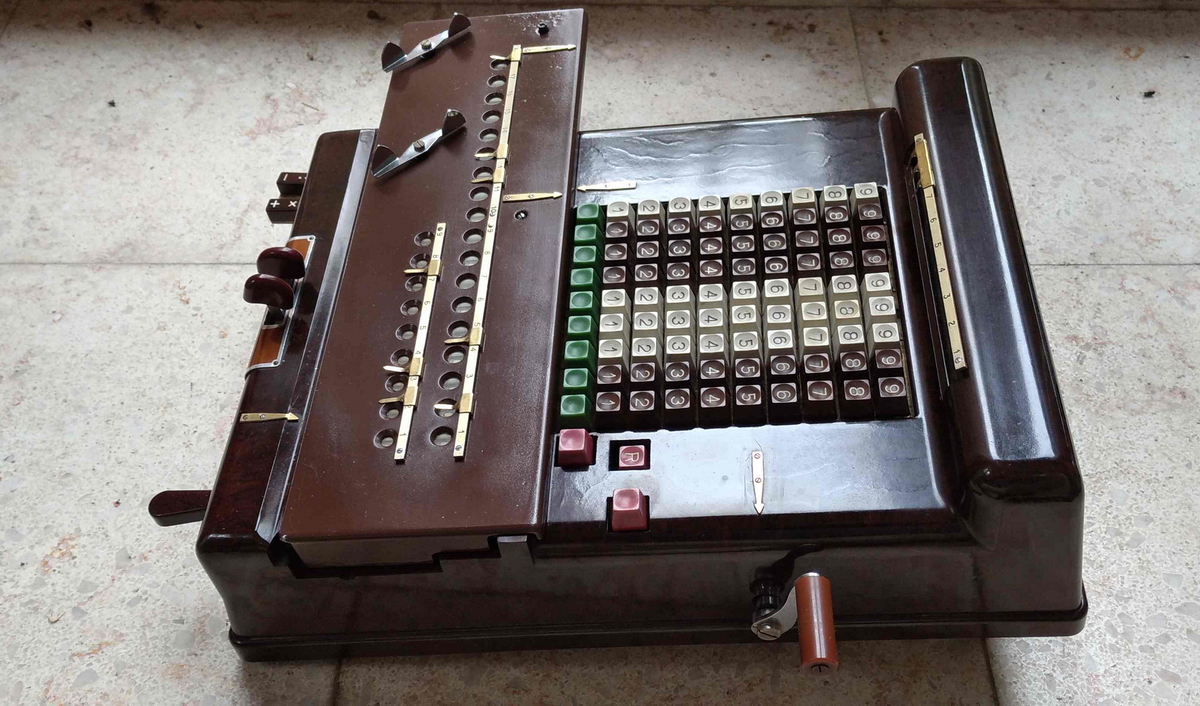
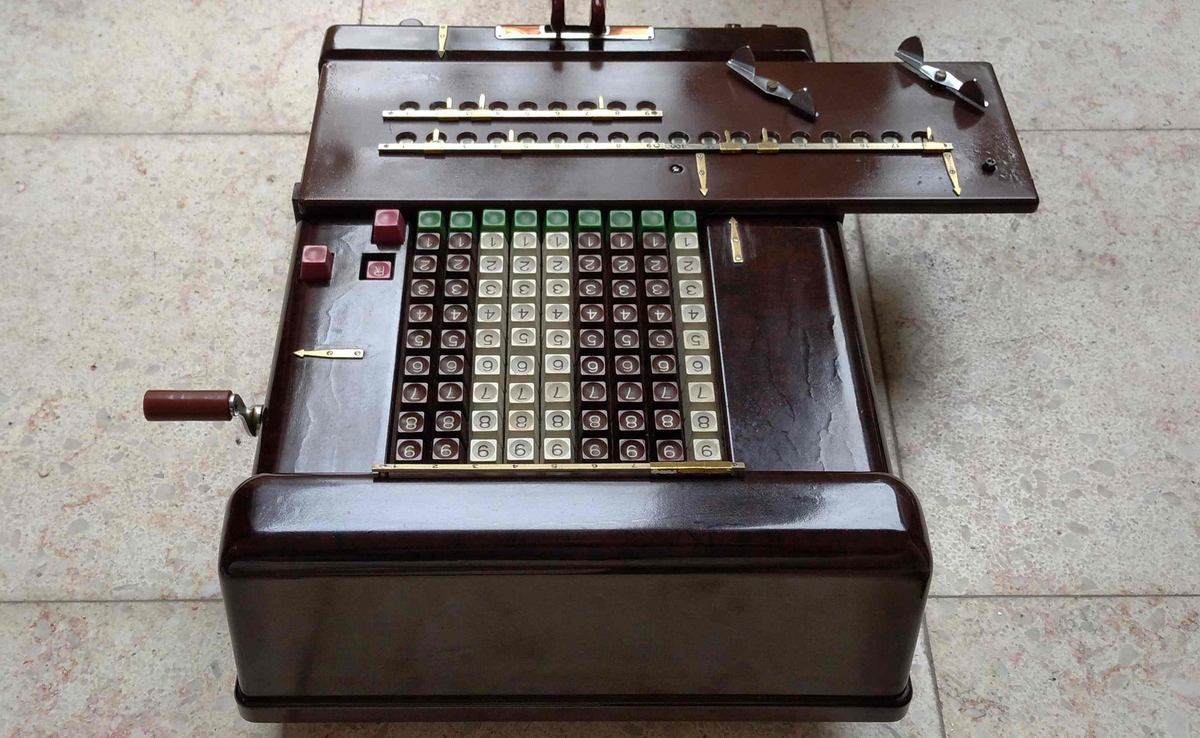
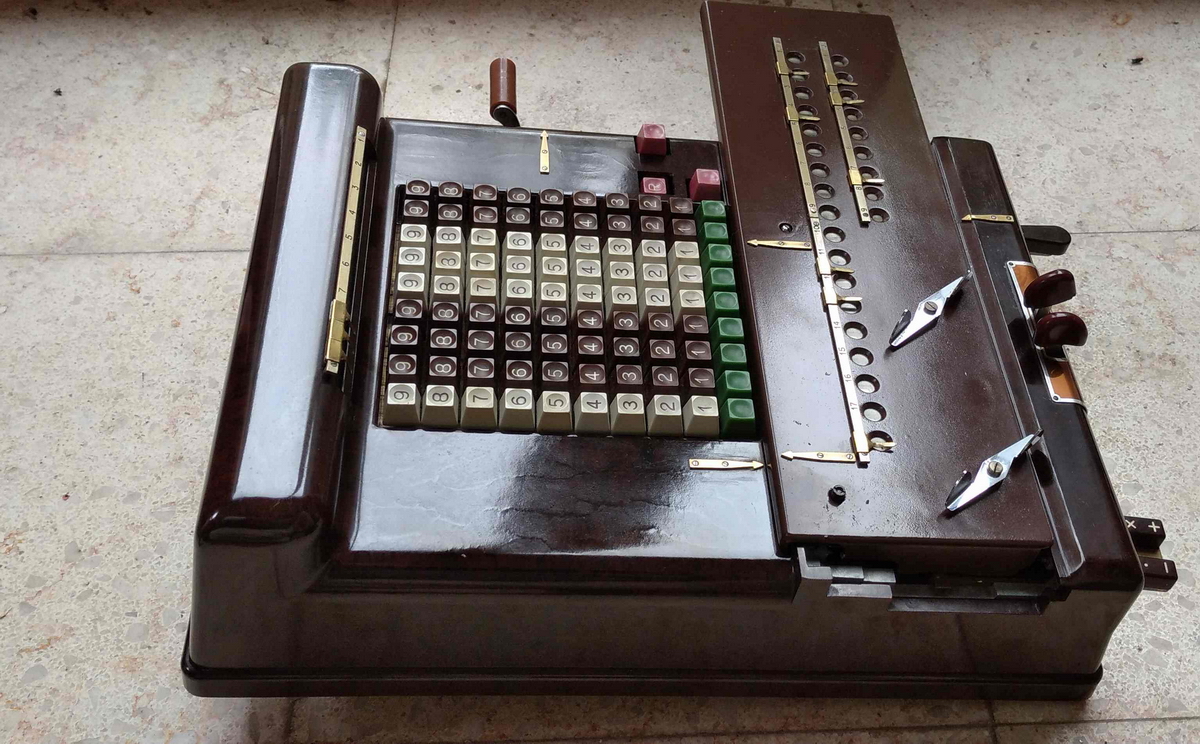
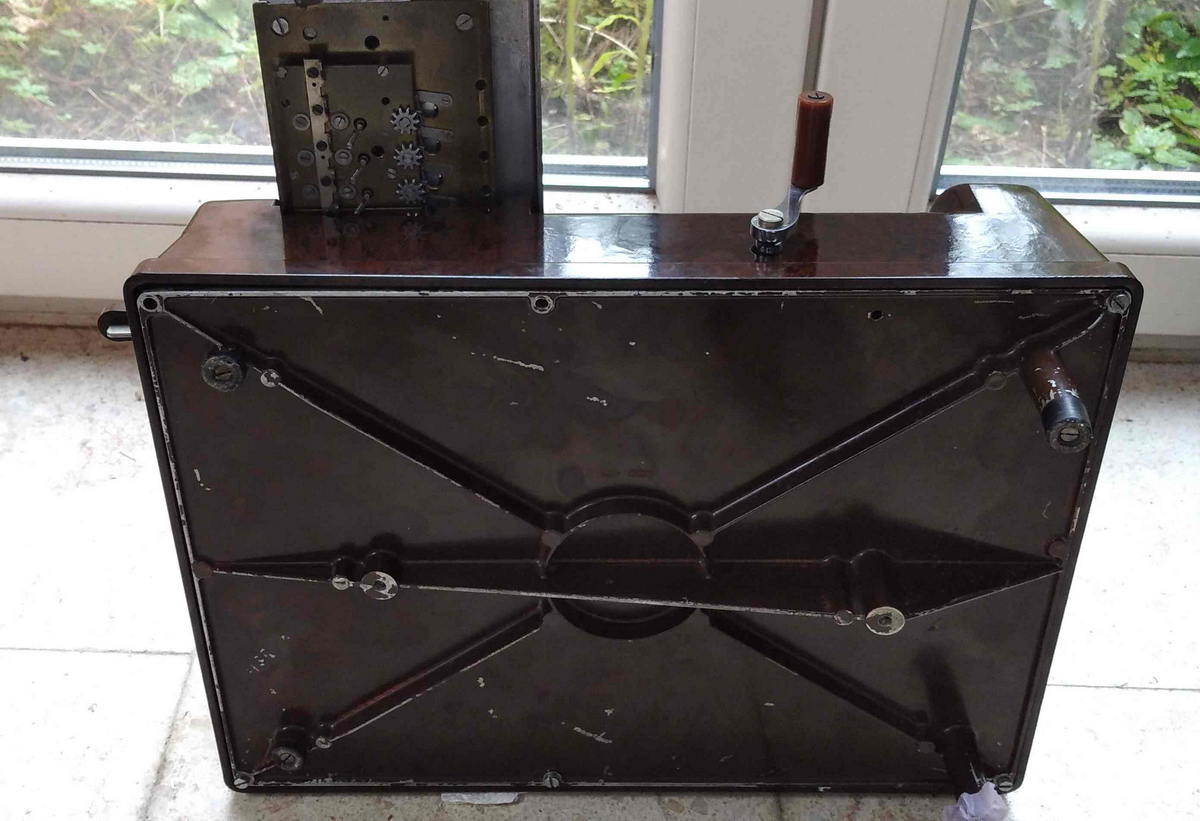
After shooting the video below a few days later, with the fight for reassembling the carriage under the right tension a more distant memory, I've mellowed a bit with regard to this machine ... so make up your own mind whether it makes any sense!
